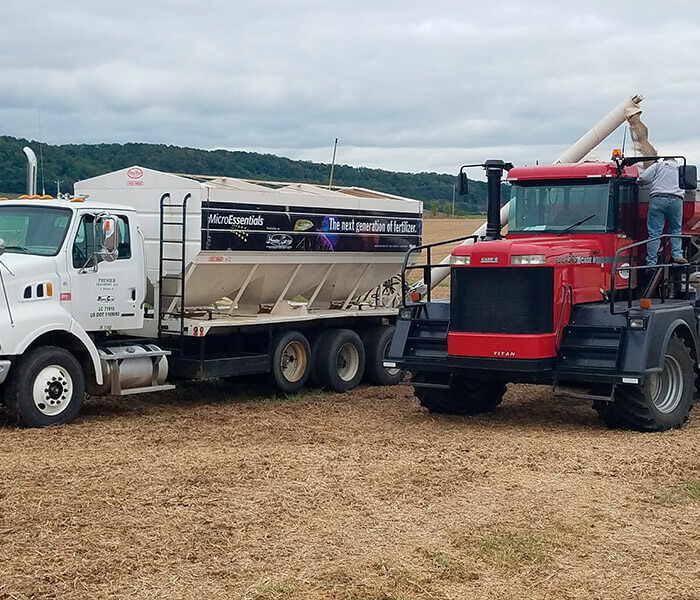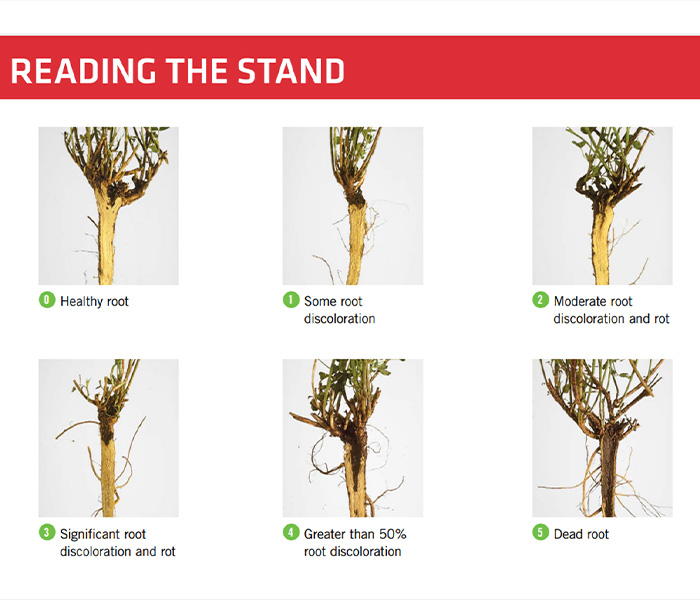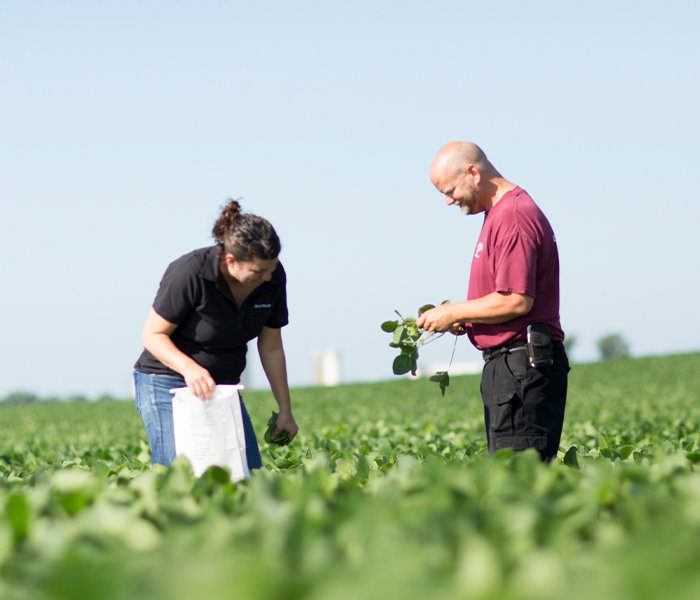Preparing for Next Year.
Now is the time to evaluate your alfalfa stands and decide which alfalfa fields should be rotated to another crop next season. Alfalfa stands should be rotated out of production based on their root scores and stem counts. Keep in mind, alfalfa stand health will not improve over winter. Here are the steps you can take to evaluate your stands.
Randomly dig plants form throughout the field (minimum 10 plants per field). Split crowns and score roots of each plant.
- Determine the average score for the field.
- Rotate or keep the stand based on the average score from reading. A root score of 0-2 is a healthy stand for high production. A root score of 3-5 should be rotated out of production.
- Use the stems to evaluate current yield potential & use roots to evaluate future yield potential
- Established stand: stem density of 55 stems/sq. foot is non-yield limiting
- New seeding: Plant density greater than 15 plants/sq. foot in a fall of seeding year or greater than 6 plants/sq. foot during the 2nd production year is non-yield limiting.
- Fields that are yield limiting should be rotated to a different crop.
There are many different benefits to rotating alfalfa, but one of the main reasons is the nitrogen benefits. Alfalfa is the only crop that can produce all the nitrogen requirements for a wheat crop. Also, depending on yield goal, alfalfa may provide nearly all the nitrogen required for corn.
Alfalfa is the ultimate super-collector for obtaining and holding nutrients and Carbon in the soil profile due to its deep and extensive root system. Data shows that this feature add significantly to a yield bump of the consecutive crop with overall improvements in soil health.
Once again, now is the time to evaluate your stands and decide which fields should be rotated to another crop next season. Read more
here on the benefits of fall fertilizer applications for those fields that you decide to keep in production. As always, reach out to your local Premier agronomist with any questions on evaluating alfalfa stands.



